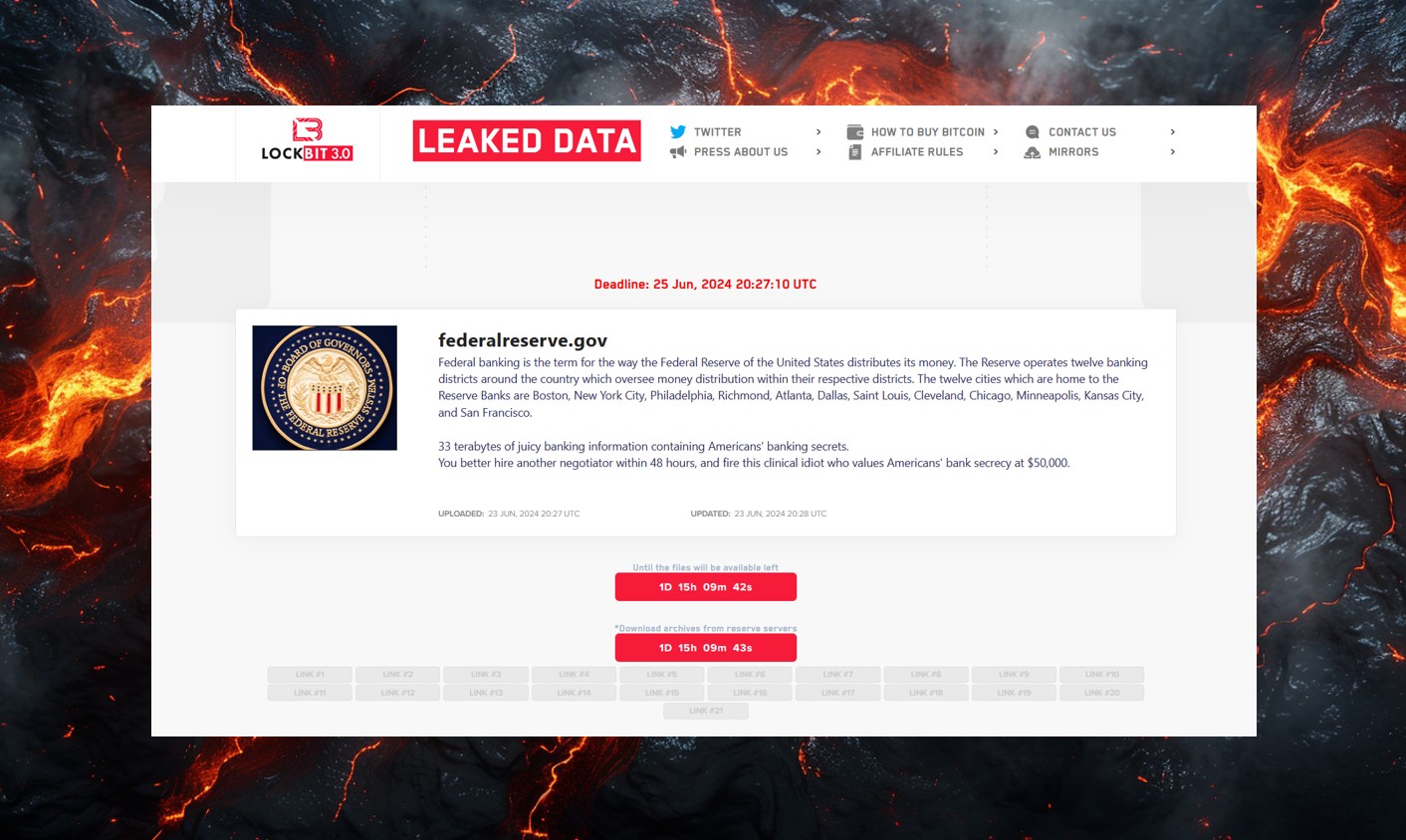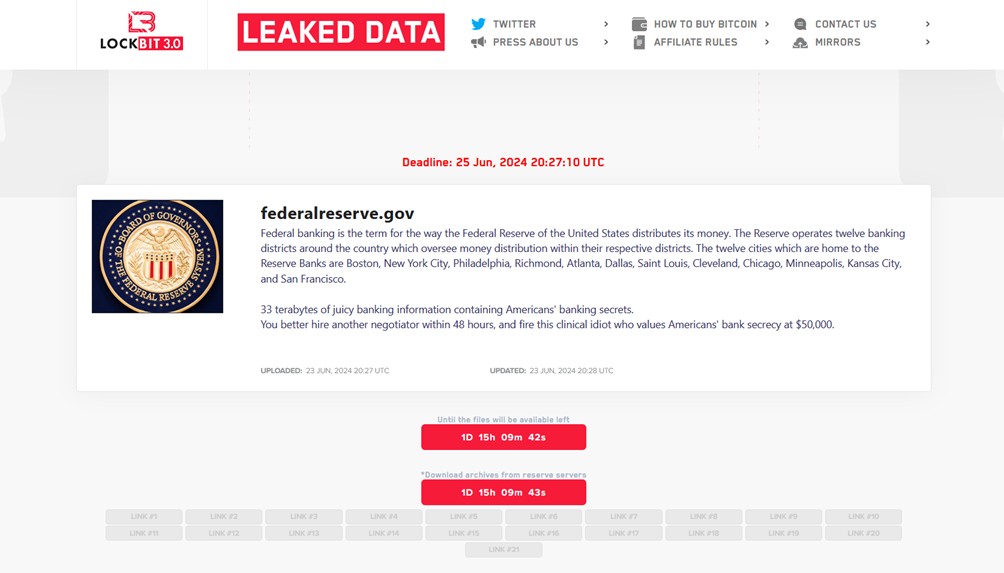
Pietro Melillo : 24 June 2024 07:32
In a significant escalation within the cybersecurity realm, the notorious ransomware group Lockbit 3.0 has claimed responsibility for a cyberattack targeting the Federal Reserve of the United States. The declaration was made through a post on the Dark Web leak site associated with the ransomware actor, raising alarms across financial and governmental sectors.

On June 23, 2024, at 20:27 UTC, Lockbit 3.0 announced that it had infiltrated the systems of the Federal Reserve, compromising a staggering 33 terabytes of sensitive banking information. The data reportedly includes confidential details of American banking activities, which, if verified, represents one of the most substantial breaches of financial data in history.
The post, titled “federalreserve.gov,” details the structure of the Federal Reserve, highlighting its role in distributing money through twelve banking districts across the country, including major cities like Boston, New York City, Philadelphia, Richmond, Atlanta, Dallas, Saint Louis, Cleveland, Chicago, Minneapolis, Kansas City, and San Francisco.
Iscriviti GRATIS ai WorkShop Hands-On della RHC Conference 2025 (Giovedì 8 maggio 2025)
Il giorno giovedì 8 maggio 2025 presso il teatro Italia di Roma (a due passi dalla stazione termini e dalla metro B di Piazza Bologna), si terranno i workshop "hands-on", creati per far avvicinare i ragazzi (o persone di qualsiasi età) alla sicurezza informatica e alla tecnologia. Questo anno i workshop saranno:

Supporta RHC attraverso:
Ti piacciono gli articoli di Red Hot Cyber? Non aspettare oltre, iscriviti alla newsletter settimanale per non perdere nessun articolo.
In their statement, Lockbit 3.0 issued a stark ultimatum: the Federal Reserve has 48 hours to hire a new negotiator and dismiss the current one, whom the attackers disparagingly referred to as a “clinical idiot” for valuing American banking secrecy at $50,000. The ransomware group is known for its aggressive negotiation tactics, often demanding exorbitant sums to prevent the release of stolen data.
The potential fallout from this breach is immense. If the claims are accurate, the exposure of such a vast amount of sensitive information could have dire consequences for individual privacy, financial stability, and national security. The Federal Reserve, responsible for overseeing the nation’s monetary policy, regulating banks, and maintaining financial stability, is a critical component of the U.S. financial infrastructure.
Financial institutions, cybersecurity experts, and government agencies are undoubtedly on high alert. An attack of this magnitude underscores the vulnerabilities within even the most secure and vital systems. The implications extend beyond the immediate threat of data exposure; they pose significant risks to the confidence in the U.S. financial system.
Lockbit 3.0 is part of a growing trend of sophisticated ransomware groups that target high-value organizations, demanding ransoms in exchange for not leaking stolen data. Their modus operandi typically involves encrypting data and threatening to release it publicly unless their financial demands are met. The group has been linked to several high-profile attacks in recent years, solidifying their reputation as a formidable cyber threat.
As of now, the Federal Reserve has not publicly confirmed the breach or provided details about the ongoing response efforts. However, given the critical nature of the institution, it is expected that federal agencies, including the Cybersecurity and Infrastructure Security Agency (CISA) and the Federal Bureau of Investigation (FBI), are actively involved in addressing the situation.
Public assurance measures will likely be a priority to maintain confidence in the financial system. The breach serves as a stark reminder of the importance of robust cybersecurity defenses and the need for continuous vigilance against increasingly sophisticated cyber threats.
The alleged cyberattack by Lockbit 3.0 on the Federal Reserve is a wake-up call for all sectors reliant on digital infrastructure. As the situation develops, it will be crucial to monitor the Federal Reserve’s response, the effectiveness of federal cybersecurity measures, and the broader implications for national security and financial stability.
In a world where cyber threats are becoming increasingly complex and pervasive, this incident highlights the urgent need for enhanced cybersecurity strategies and international cooperation to combat ransomware and protect critical infrastructure from future attacks.
 Pietro Melillo
Pietro Melillo